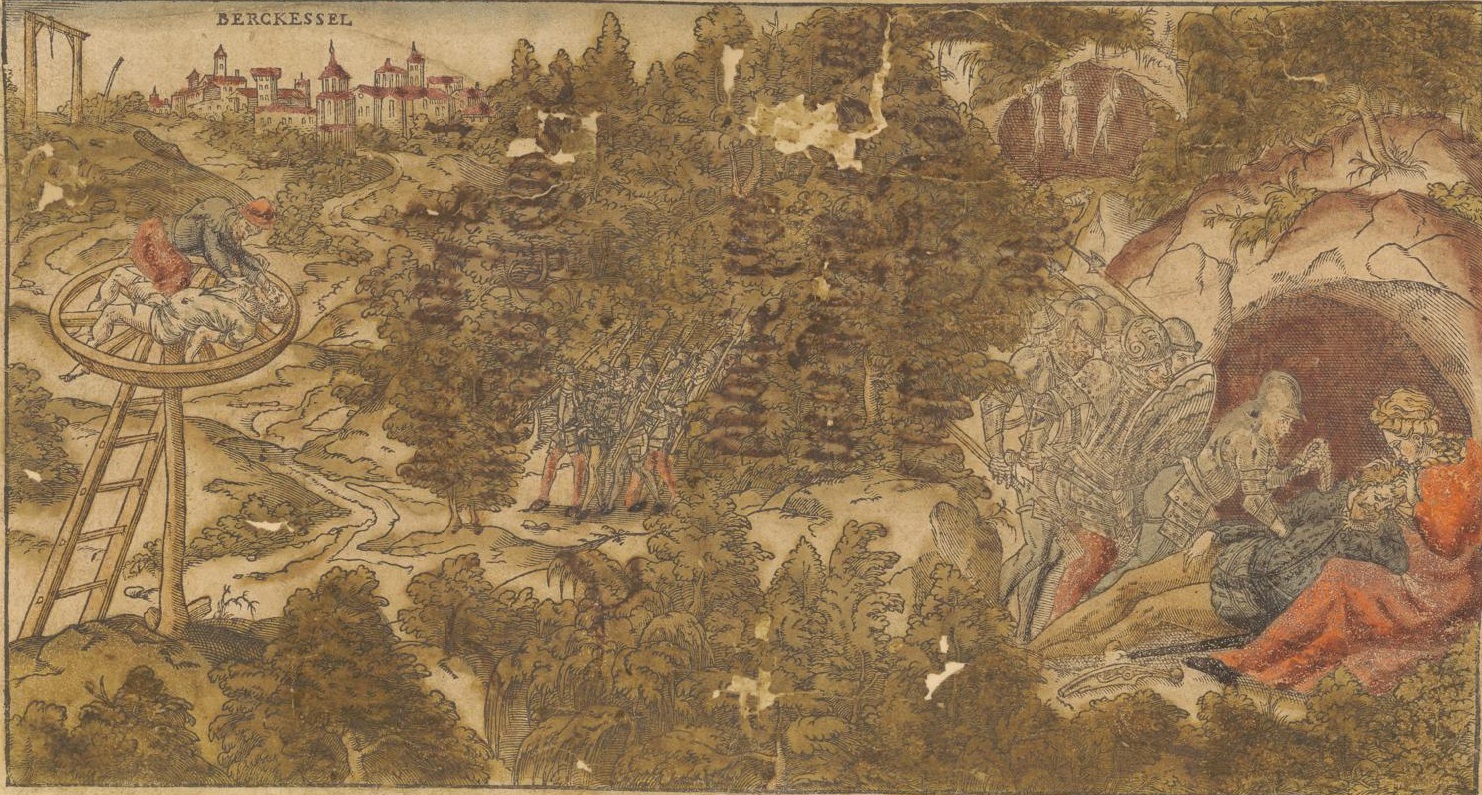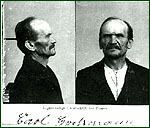Hunting In The Past#1
A delightful greeting!
“Ah, greetings noble Enchanted Potato, thou dost shine so bright!
Pray tell, what magical tales dost thou bring to share with us today?”
Today, we’re all stepping into the role of hunters, tasked with tracking down figures from the past. Each week, you’ll receive a bounty for two individuals, and it will be your mission to locate them and report back here. Let’s begin the hunt without delay—time is of the essence!
Bounty No. 1
Christman Genipperteinga is a possibly mythical German serial killer and bandit said to have lived in the 16th century. Between 1569 and 1581, he allegedly claimed the lives of 964 individuals. While accounts of his supposed crimes emerged shortly after his death in 1581, historians remain doubtful about his existence. Similar tales of serial-killing bandits circulated throughout the Holy Roman Empire during and after his purported lifetime.

Biography
Genipperteinga was said to have been born in Körpen, a town approximately two miles from Köln. As an adult, he lived in a cleverly concealed cave complex about a mile from Bergkessel. The cave was skillfully designed to mimic a regular house, complete with cellars, rooms, and chambers. From 1569 to 1581, he preyed on travelers passing through the area, earning a reputation so fearsome that only groups of five or more dared to traverse the region, believing they might stand a chance of avoiding his wrath.
Some versions of the story suggest that he resorted to cannibalism, consuming his victims’ flesh after killing them. Genipperteinga often looted and murdered alongside a gang of accomplices. However, his greed and insatiable appetite for wealth and power ensured no one lasted long in his group. After his men helped him transport the loot back to his cave, he would reportedly serve them poisoned ale, killing them to keep the spoils for himself. He disposed of their bodies by dumping them down a mine shaft connected to his cave network.
In 1574, Genipperteinga ambushed a young woman, referred to as Dorothea in some accounts, as she traveled to join her family in Trier. Rather than killing her as intended, he abducted her and forced her to return to his cave under the threat of death. He compelled her to swear an oath in God’s name never to betray him. For the next seven years, Dorothea endured life as his captive and sex slave. To prevent her escape, he chained her ankle whenever he left the cave to hunt for new victims.
During her captivity, Dorothea bore six children by Genipperteinga, all of whom he murdered shortly after their birth. He allegedly strangled them with his hands, with later accounts claiming he consumed their hearts afterward. He hung their lifeless bodies from a nearby tree, and when the wind caused the corpses to sway, he would mockingly declare that they were dancing.
In May 1581, Genipperteinga reluctantly granted Dorothea’s request to visit her family in Trier, on the condition that she reaffirm her vow never to betray him. However, upon reaching Trier and seeing children playing in the streets, she was overwhelmed with grief as memories of her murdered children flooded back. She broke down in tears, regretting the harrowing seven years she had endured.
When onlookers noticed her distress and asked what was wrong, Dorothea initially used her vow to Genipperteinga as an excuse to avoid revealing the truth. Eventually, she was brought before the mayor and local priests, who assured her that God would not hold her accountable for breaking her oath to a monster. Gaining their trust, she confessed everything about her captivity and Genipperteinga’s atrocities.
To ensure the element of surprise, the authorities allowed Dorothea to return to the cave alone, so Genipperteinga would not suspect their impending arrival.
Bounty No. 2
Karl Friedrich Wilhelm Großmann (13 December 1863 – 5 July 1922), commonly known as Carl Großmann, was a German serial killer and rapist active in the Berlin district of Friedrichshain. Between 1918 and 1921, he was responsible for the murders of at least twenty women. Großmann took his own life while awaiting the conclusion of his trial, leaving behind no full confession of his crimes.

Biography
Karl Friedrich Großmann was born to Karl Friedrich Großmann and Marie Dorothea Sophie Prößel in Alt Ruppin, Germany. His childhood was marred by physical abuse from his alcoholic father, who forced him to conceal his injuries. From a young age, Großmann exhibited aggressive tendencies and a fascination with blood and animal slaughter. He often sneaked into the local butcher shop to observe the process, captivated by the sight.
As a child, Großmann assisted with his father’s merchant business and cared for the family’s goats. His unusual fondness for the animals earned him the nickname “Zickenkarl” (“Nanny Goat Karl”) among neighbors. Großmann left school in the third grade and took a job at a local fabric factory, marking the beginning of his work life.
Crimes
In the late 1890s, Großmann was unable to secure a permanent job and became a wanderer traveling across southern Germany, mostly the Franconian area of Bavaria, earning a livelihood by stealing, selling, and begging. During this period, he was incarcerated at least 24 times for sex offenses against underage girls, assault, trespassing, petty burglary, and bestiality. He was first charged with raping a four-year-old child. After Großmann was found guilty of sodomizing a goat and assaulting a twelve-year-old girl, he received the longest of these sentences at Nuremberg.
After being released from prison in 1914, Karl Großmann moved to Berlin, where he rented a modest flat near the Ostbahnhof rail station. To make ends meet, he ran a sausage stand and sold meat on the black market. However, beneath this seemingly ordinary life, Großmann harbored a dark secret: he was a serial killer who targeted vulnerable women.
Großmann would approach women, many of whom had recently moved to Berlin, offering them jobs as housekeepers or domestic help. Once inside his flat, he would overpower and rape them. Some women were released after swearing not to report him, while others were murdered. Afterward, Großmann would accuse them of stealing from him and report them to the police.
The majority of his victims were low-income women, including sex workers, mothers, and laborers. Großmann took advantage of Berlin’s turbulent political climate, where the police were preoccupied with quelling riots and protests, allowing him to evade suspicion despite multiple investigations.
In one case, a 15-year-old girl accused Großmann of digitally compromising her, but the case was dismissed due to her being a homeless fugitive. Two other women who accused Großmann of rape were ignored by the police, largely because they were known prostitutes. The discovery of mutilated human remains in the Luisenstadt Canal of the Spree River led to a thorough investigation. Between May and August 1921, at least 23 female body parts were found. The only victims identified were Frieda Schubert and Johanna Sosnowski.
When Großmann was arrested in August 1921, his reign of terror came to an end. During his trial, rumors circulated that he had sold human remains as meat, but these claims were never verified. The case shocked and enraged the public.
Großmann’s ability to evade detection for so long was largely due to the social mores of the time. Women, especially those from low-income backgrounds, were routinely ignored and marginalized. Police forces were also overburdened with maintaining public order. Although Großmann’s crimes were eventually exposed, his case highlighted the need for greater protection and support for vulnerable women. It underscored the importance of thorough investigations and the necessity for law enforcement to treat all criminal reports with the utmost seriousness.
Discover more from Ge-erdy Verse
Subscribe to get the latest posts sent to your email.



